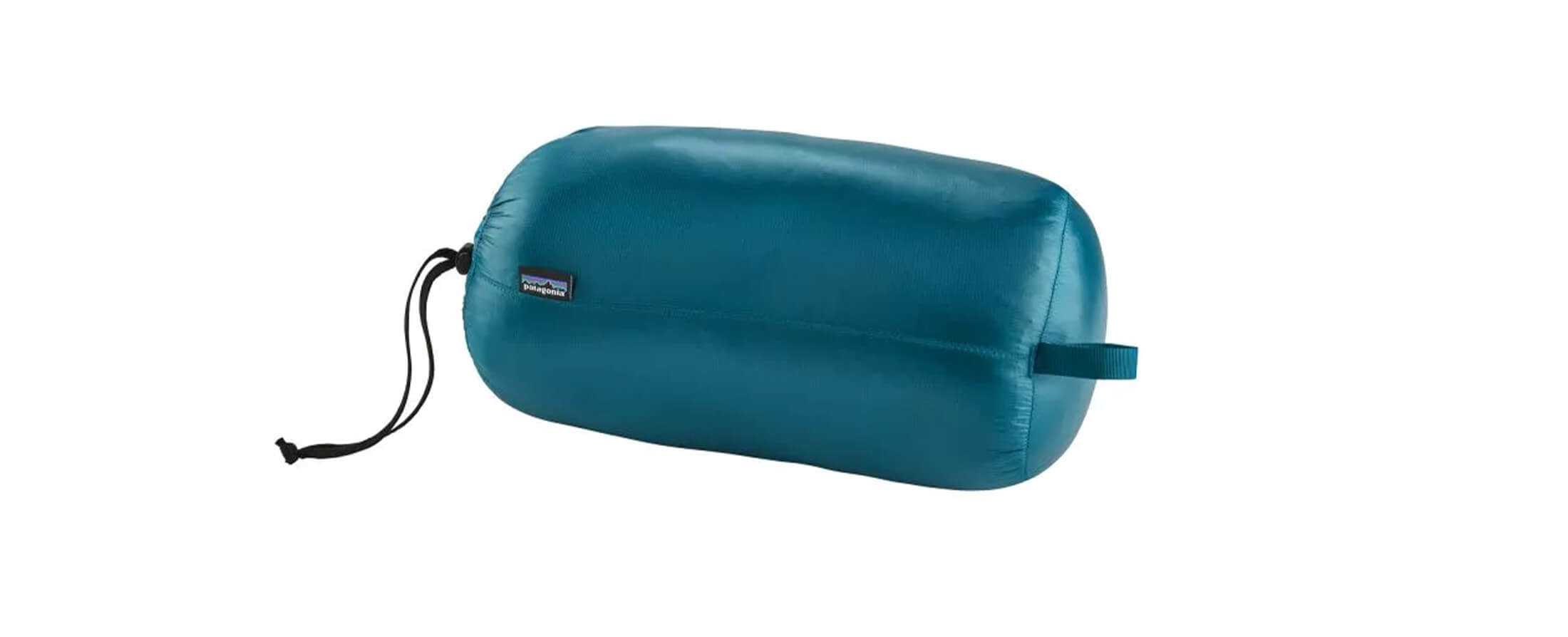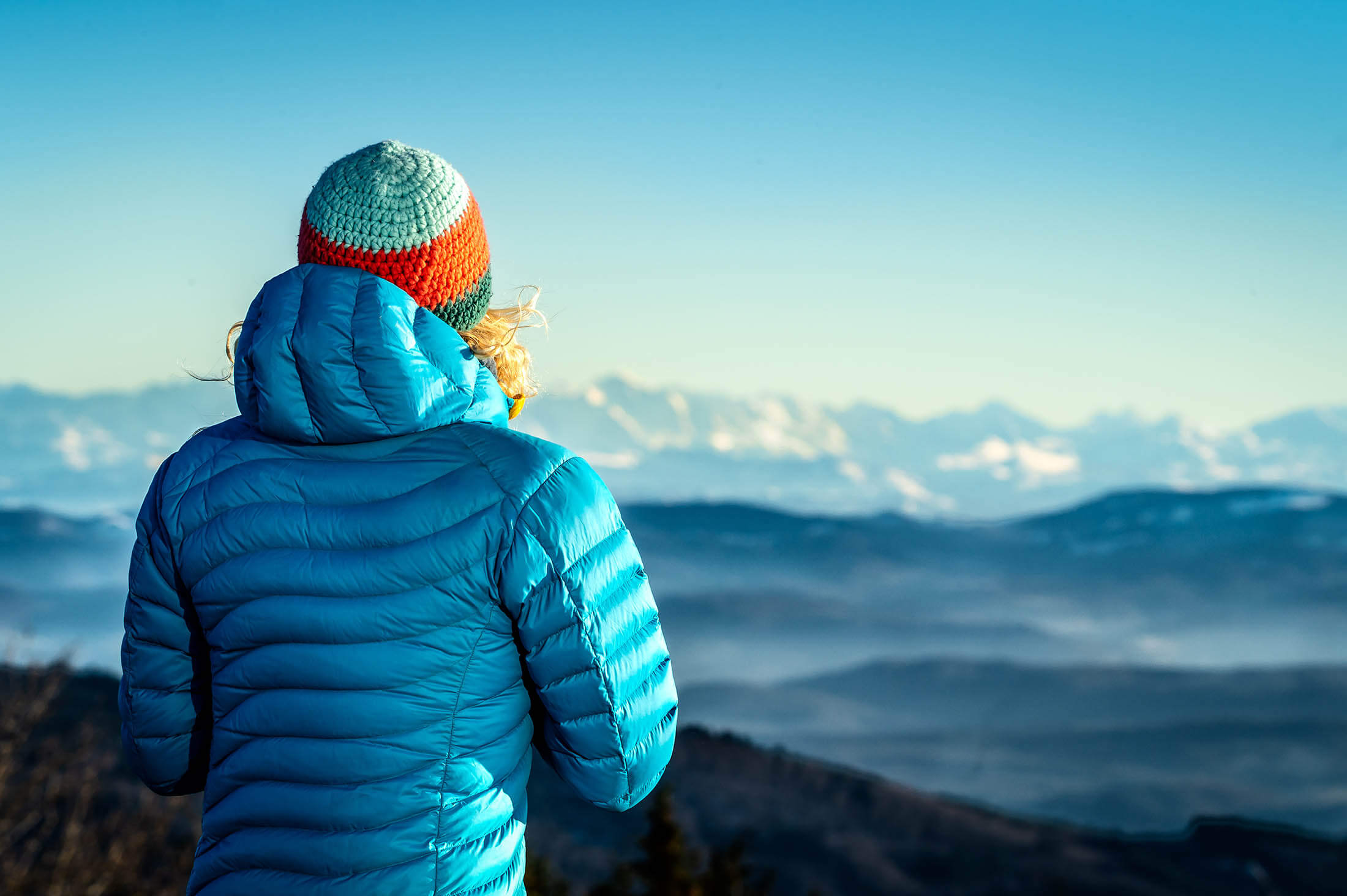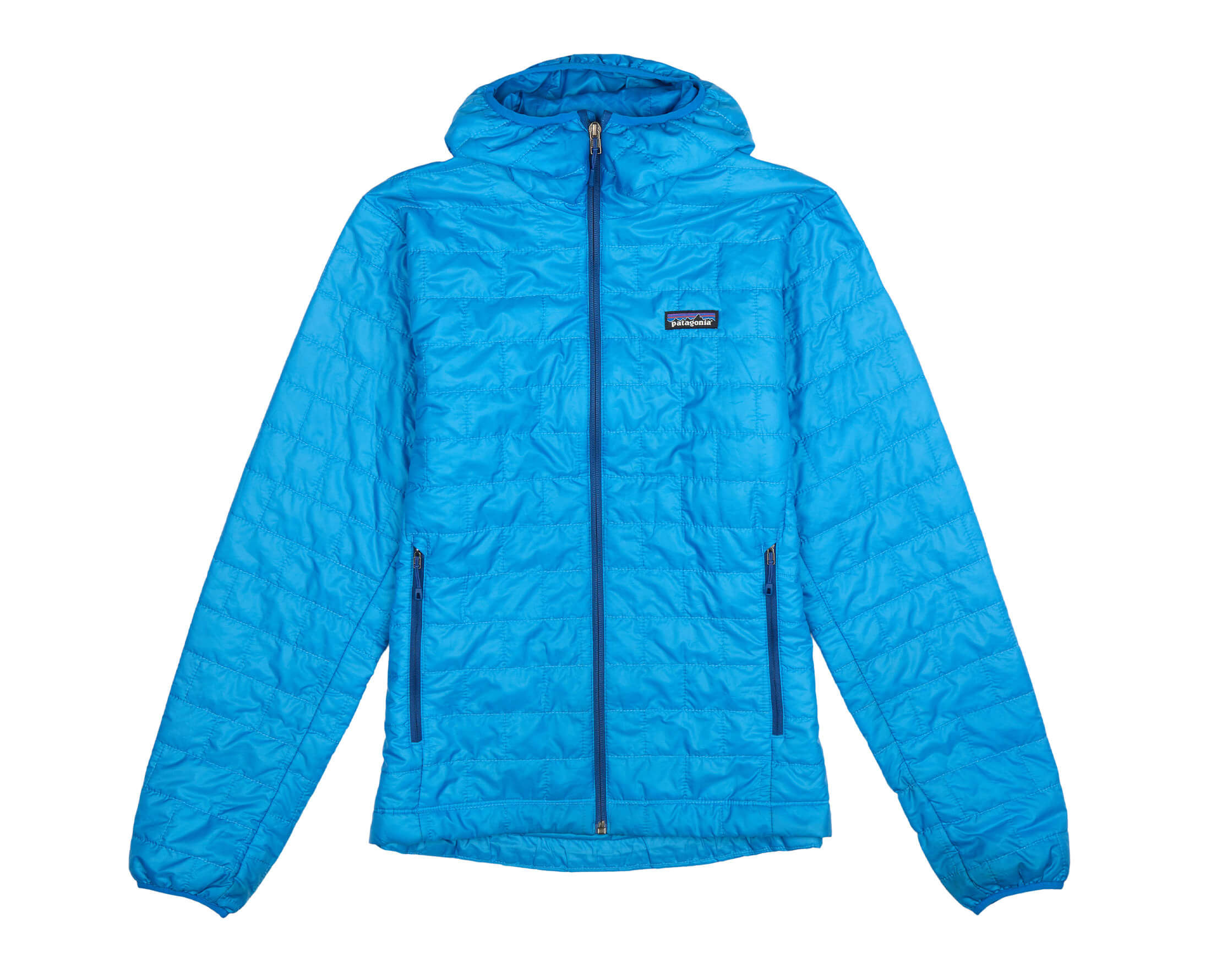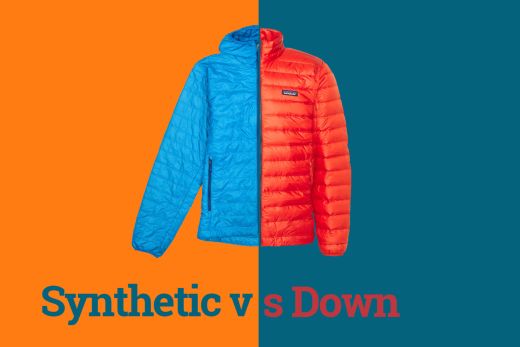If you’re looking to buy a new sleeping bag or insulated jacket, you might have just decided to revisit the down vs. synthetic debate and have come across a brand of insulation called PrimaLoft. Over the past several years, much has been written about this wonderful material with superlatives abound. And that begs the question – Is this stuff really as good as down? And how is it different from other types of synthetic fill? I went in search of some answers and came away with some useful comparisons. But first a quick primer on loft and the science of insulation.
What is loft?
When your outermost layer is uninsulated, your body loses heat through convection when the fabric – chilled by the cold air outside it – comes into contact with your skin. But with a down jacket, a mix of air and fluffy filaments fill the space between the outer and inner layers. This acts as a barrier to convection and traps warm air next to your skin. Jackets filled with synthetic insulation work the same way.
One of the key differences between the two main types of insulation – down and synthetic fill – is the amount of loft they create. Loft refers to the air that is trapped between the filaments of insulation and can essentially be described as ‘fluffiness’. The finer and lighter the insulating material, the more loft it generates. Of course, if the same material absorbs water and clumps together, like down does, it can lose its loft and insulating properties when wet.
Down
Fill power
The quality of down is specified in fill power, which is a measure of how many cubic inches an ounce of insulation will fill. The higher the quality, the more loft it creates and the higher the fill power. Low qualify down has a fill power of 300 to 500, mid-range down offers 500 to 700 fill power, and high quality down boasts 800 to 900 fill power. It’s important to note that a sleeping bag with a fill power of 500 isn’t necessarily less insulating than a sleeping bag with 700 fill power down, but the less expensive bag will certainly have to be heavier to ensure the same level of warmth.
Lightweight and compressible
Besides offering a warmth-to-weight ratio unrivalled by synthetics, down is also highly compressible. A down jacket can be stuffed into a bag no bigger than a soda can, and a down sleeping bag can squeeze into a two-liter stuff sack. These two properties make down a firm favourite with the ultralight crowd. Bikepackers, fastpackers, and ultralight backpackers rejoice. The other factor that makes down worth the price is its durability. Down can be repeatedly stuffed and re-stuffed without compromising its loft, and you can expect a quality down sleeping bag to last 10 years or more.

Not insulating when wet
The biggest drawback to down is that it loses its loft and insulating properties when wet. Even a light sprinkling can turn untreated down into a mushy, clinging mess which will then take hours to dry even when put in direct sunlight. In very wet or humid conditions, untreated down is not the best choice if you’re not certain that you will be able to keep your gear dry. Down’s poor damp performance could also be a factor if you think you might build up a sweat while wearing your insulated jacket. But don’t discount down as an insulation for jackets just yet. There is a solution… kind of.
Hydrophobic down
Dry down is coated with a hydrophobic coating to make the fibres more water-resistant. As a result, dry down performs better in wet conditions and so addresses the biggest problem with natural down. While this improved down still doesn’t match the damp performance of synthetic insulation, it does repel water for longer, dries faster, and retains some of its loft – up to 60% more than untreated down. The only downside to hydrophobic down is that it’s more expensive and is found mostly in high-end products. It’s more important for down to be dry treated when it’s used to fill insulated jackets. A sleeping bag is a lot less likely to get wet.
Ethical issues
The other issue with down is that it’s an animal product, which raises questions about the treatment of the birds it’s sourced from. Down has been linked to the force feeding and live plucking of geese and ducks, and so you should do some research to ensure that the down in your next sleeping bag or jacket comes from a farm known for the ethical treatment of their birds. Fortunately, there now is an organisation that makes that easier. The Responsible Down Standard only puts its label on down that comes from farms that have been verified as following humane farming practices.

Synthetic insulation
Synthetic insulation can refer to any man-made material that is sandwiched between two layers to improve the heat-trapping properties of a garment, but here I’m referring specifically to the type of insulation that’s used in a puffy jacket. Many outdoor brands produce their own proprietary synthetic insulation for use in their products, but others, like PrimaLoft and Polartec, make insulation solely for use by other manufacturers. The following is a short list of types of synthetic insulation and the brands that use them. An asterisk indicates that this material is that brand’s proprietary insulation.
- PrimaLoft Silver, Gold (North Face, Patagonia, Montane)
- Polartec Power Fill (Millet, 66 North, Bight Gear)
- PlumaFill* (Patagonia)
- CoreLoft* (Arc’teryx)
- ThermoBall* (The North Face)
- QuadFusion* Mimic (Haglöfs)
- Thinsulate (Marmot)
Allround performance
The main benefits of synthetic insulation are that it retains some of it’s warmth when damp and that it dries quickly, even outperforming dry down by a long shot in this department. This all-weather performance makes synthetic insulation a great option when you can’t be sure that you’ll be able to keep your gear dry. In most conditions, you actually should be able to prevent your sleeping bag or quilt from getting wet. But your insulated jacket will be exposed to the elements and so can benefit from a fill with better damp performance.
Heavier and less compressible
No synthetic insulation offers as much loft as high-quality down, and just a casual comparison of products filled with the different types of insulation will make it clear that synthetic fill is both heavier and less compressible than down. A synthetic sleeping bag can be almost twice the size of a down bag when compressed, and the fill can weigh up to 90% more than the down in a more expensive bag with the same temperature rating.
More affordable, not as durable
Synthetic insulation is significantly less expensive than down. In fact, with the exception of PrimaLoft Gold, which can cost as much as mid-range down, synthetic-insulated products can be up to 50% cheaper than down equivalents. But then there’s the durability factor. Synthetic insulation doesn’t stand up to compression quite as well as down, and you’ll have to replace a synthetic sleeping bag or jacket long before you’ll have to replace one made of down – think two to four years for a synthetic sleeping bag and 10 to 15 years for a down model.

What is so special about PrimaLoft?
Originally developed by the U.S. army in the 80’s, PrimaLoft is now the leading brand in high-end synthetic insulation and is the choice for brands like North Face, Patagonia, and Montane. That begs the question, what is it about this polyester microfibre that makes it so appealing as a fill?
Down-like loft meets damp performance
PrimaLoft offers the damp performance of a synthetic while boasting more loft than any other man made fiber. In fact, PrimaLoft Gold offers a weight-to-warmth ratio that matches mid-range down (around 550 fill power). This wonderful stuff is one of three types of insulation produced by PrimaLoft. There’s also PrimLoft Silver and PrimaLoft Black, each of which come in several variations. Just in case you couldn’t guess, this quick comparison shows you where they sit in the PrimaLoft lineup.
Gold: equivalent to 550-fill power down
Silver: equivalent to 450-fill power down
Black: equivalent to 350-fill power down
Improved durability
The other advantage of PrimaLoft is that it stands up to restuffing better than most types of synthetic fill – there have even been claims of PrimaLoft jackets lasting nearly a decade when well looked after. This improved longevity helps to offset the higher than normal (for synthetic) price of PrimaLoft. Although not as expensive as high-quality down, PrimaLoft is more expensive than other synthetics, and a jacket filled with PrimaLoft Gold could cost upward of $250, putting it in the same price range as down jackets.

What to use when
High-end down (800+ fill power) is still the insulation of choice for people who prioritise warmth, weight, and compressibility. Even if you live in a wet or humid climate, you’ll probably still be better off with dry down if you know with some certainty that you can keep your gear dry. When choosing a sleeping bag or quilt, I’d only choose PrimaLoft over high quality down if I had doubts that I’d be able to keep my gear from getting wet or were concerned that I wouldn’t be able to dry it out once it got wet. A down quilt would probably not be the best choice for a week-long spring trip into the Pacific Northwest if I were just learning to tarp camp.
Given the increased likelihood that your insulated jacket could get wet (compared to a sleeping bag), choosing a fill for a jacket requires more consideration. If you know you can keep your jacket dry – maybe you have a waterproof shell to go over it and only expect sporadic rain – down is still your best choice. But if you know that it would be unrealistic to expect to keep your puffy dry, synthetic insulation would be a better option. This is also true if you might work up a sweat while wearing your insulated jacket. If you do decide on a down jacket, I strongly recommend choosing a jacket filled with dry down. That way your jacket will still retain some of it’s loft if it catches a sprinkling.
There is more to insulation than fill
Insulation isn’t the only factor that determines a jacket or sleeping bag’s thermal properties. There are many other features and design elements that can make insulated gear more or less warm. Unfortunately, I don’t have enough space here to address all the insulating features found in sleeping bags and insulated jackets. But I do have an article on sleeping bags and quilts, where you can learn about how these are designed to ensure a warm and comfortable sleep.
